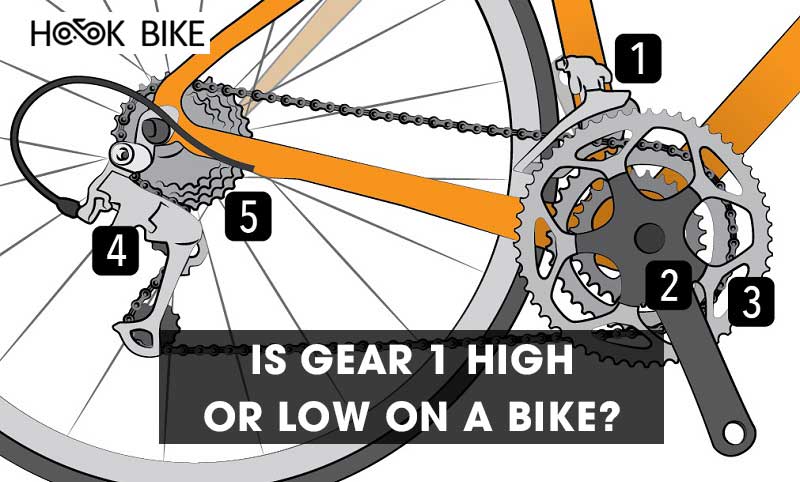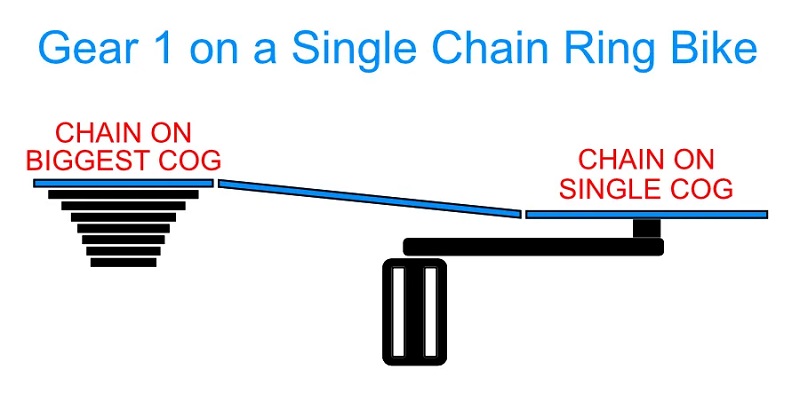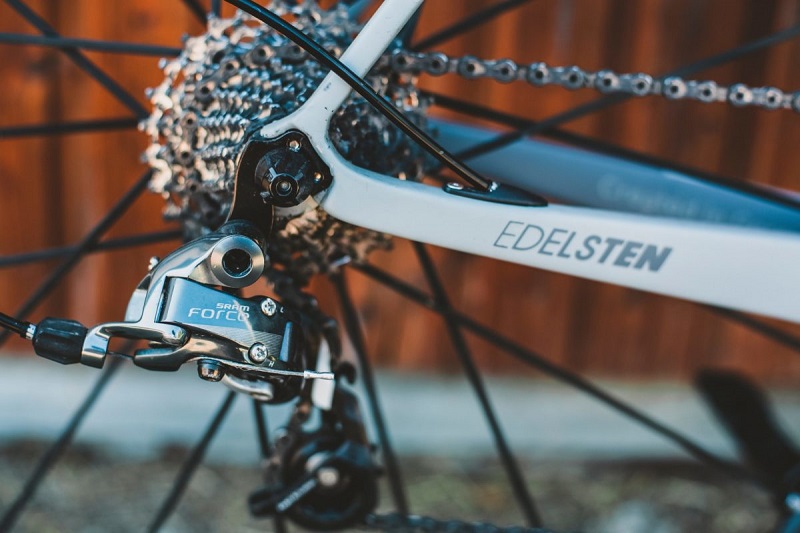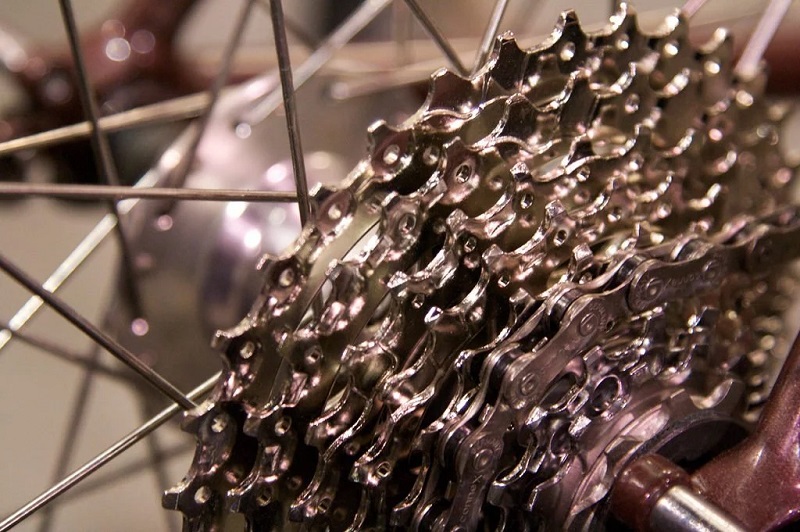Parts
Is Gear 1 High or Low On A Bike?
When it comes to cycling, understanding your gears is paramount. One of the most common questions that beginners have is, “Is Gear 1 high or low on a bike?“. This article of HookBike’s is here to provide you with a comprehensive understanding of how bike gears work, specifically addressing the concept of whether Gear 1 is considered high or low.
The Basics of Bike Gears
Bike gears play a crucial role in making cycling more efficient and comfortable, allowing you to adapt to various terrains and conditions. Here are the basics of bike gears:
Gearing Components
Chainrings: These are the front sprockets attached to the crankset. Bikes usually have two or three chainrings.
Cassette or Freewheel: These are the rear sprockets mounted on the rear wheel. Cassettes are common on modern bikes, while freewheels are found on some older or entry-level models.

Gear Ratios
Gears are expressed as ratios. For example, a 2:1 ratio means that for every two rotations of the pedals, the rear wheel completes one rotation. This is a 1:1 gear, often used for climbing steep hills. Conversely, a 4:1 ratio means the rear wheel rotates four times for every two pedal rotations. This is a high gear for cruising at high speeds.
Shifting
Bikes have mechanisms, such as derailleurs, to move the chain between the chainrings and sprockets. These are controlled by shifters located on the handlebars.
The right shifter typically controls the rear gears (cassette), and the left one controls the front gears (chainrings).
To shift to an easier (lower) gear, use the right shifter (rear gears), typically pushing it to a smaller number.
To shift to a harder (higher) gear, use the left shifter (front gears), typically pushing it to a larger number.
Low Gears vs. High Gears
Low gears (small chainring in the front, large sprocket in the rear) are used for climbing steep hills or starting from a stop. They provide less resistance, making it easier to pedal.
High gears (large chainring in the front, small sprocket in the rear) are for reaching higher speeds on flat terrain or going downhill. They provide more resistance, which is harder to pedal but provides more speed.
Cadence
Cadence refers to the speed at which you pedal, typically measured in revolutions per minute (RPM). Maintaining an optimal cadence is important for efficiency and comfort.
In lower gears, you can pedal at a higher cadence, which is less strenuous on your muscles. In higher gears, you’ll need to pedal slower but with more force.
Cross-Chaining
Avoid extreme cross-chaining, which means using the big chainring in the front with the big sprocket in the rear or the small chainring in the front with the small sprocket in the rear. This can cause excessive wear on the chain and drivetrain.
That the number of gears and the gear range can vary from one bike to another. Some bikes, like single-speed or fixed-gear bikes, have only one gear, while others, like mountain bikes or road bikes, may have a wide range of gears to suit different riding styles and terrains. Understanding how to use your bike’s gears effectively will make your rides more enjoyable and efficient.

Is Gear 1 High or Low On A Bike?
In the context of a multi-speed bicycle, “Gear 1” typically refers to the lowest or easiest gear. When you shift to Gear 1, it puts the bicycle in its lowest gear ratio. This means that the chain is on the smallest chainring in the front and the largest sprocket in the rear. In this configuration, it’s easier to pedal, but you won’t go as fast per pedal stroke.
Conversely, “Gear 7,” for example, would refer to a higher gear, where the chain is on a larger chainring in the front and a smaller sprocket in the rear. In this configuration, it’s harder to pedal, but you can achieve a higher speed for each pedal rotation. The specific number of gears and how they are arranged can vary from one bicycle to another, but Gear 1 is typically the lowest gear available.
See more: What do the different gears on a bike mean?

Conventional Bicycles
In the context of conventional bicycles with multiple gears, Gear 1 is considered the easiest gear, and it is typically the lowest gear in terms of resistance. When you shift into Gear 1, you are using the smallest chainring at the front and the largest cog at the rear. This combination provides you with the least amount of resistance, making it suitable for climbing steep hills or when you need to pedal with minimal effort.
Single-Speed Bikes
Single-speed bikes, on the other hand, do not have the luxury of multiple gears. They have a single chainring at the front and a single cog at the rear. In this case, Gear 1 is the only gear available, and it can be seen as a middle ground between high and low. It offers a moderate level of resistance and is suitable for various terrains. Single-speed bikes are often favored for their simplicity and low maintenance.

The Importance of Choosing the Right Gear
Understanding whether Gear 1 is high or low is vital for optimizing your cycling performance. Selecting the right gear at the right time can make your rides more enjoyable and efficient.
High Gears
High gears, which are the larger chainrings at the front and the smaller cogs at the rear, are ideal for flat or downhill terrain. They allow you to cover more ground with each pedal stroke, leading to higher speeds. However, high gears are more challenging to pedal and are not well-suited for uphill climbs.
Low Gears
Conversely, low gears, as found in Gear 1, are perfect for steep inclines, rough terrains, or situations where you want to minimize the effort required to pedal. They provide ample mechanical advantage, making it easier to conquer hills and maintain a steady pace in challenging conditions.

How to Shift Gears?
Proper gear shifting is an art that can greatly enhance your cycling experience. Here are some tips on how to shift gears effectively:
Anticipate Terrain Changes: Pay attention to the upcoming terrain. If you see a hill approaching, shift into a lower gear before you start climbing to maintain a comfortable cadence.
Use Both Front and Rear Gears: To make the most of your gears, combine shifting at the front (changing chainrings) and the rear (adjusting the cassette). This allows for fine-tuning the level of resistance.
Avoid Cross-Chaining: Try to avoid using extreme combinations, such as the smallest chainring in the front with the smallest cog in the rear, or the largest chainring with the largest cog. Cross-chaining can lead to poor gear performance and faster wear.
Experiment and Practice: The more you ride, the better you’ll become at choosing the right gear for different situations. Experiment with different gear combinations and practice shifting regularly.
See more: Do you shift gears while pedaling?

Conclusion
In the world of cycling, knowing whether Gear 1 is high or low on a bike is fundamental. Gear 1 is the lowest and easiest gear in conventional multi-speed bicycles, while single-speed bikes have only one gear, which is typically considered a moderate option. Choosing the right gear for the terrain and your cycling goals can significantly impact your overall riding experience.
As you embark on your cycling adventures, remember that practice and experimentation are key to mastering your gears. Whether you’re cycling for leisure, commuting, or participating in competitive races, understanding your gears and how to use them effectively will enhance your enjoyment and performance on the road.

